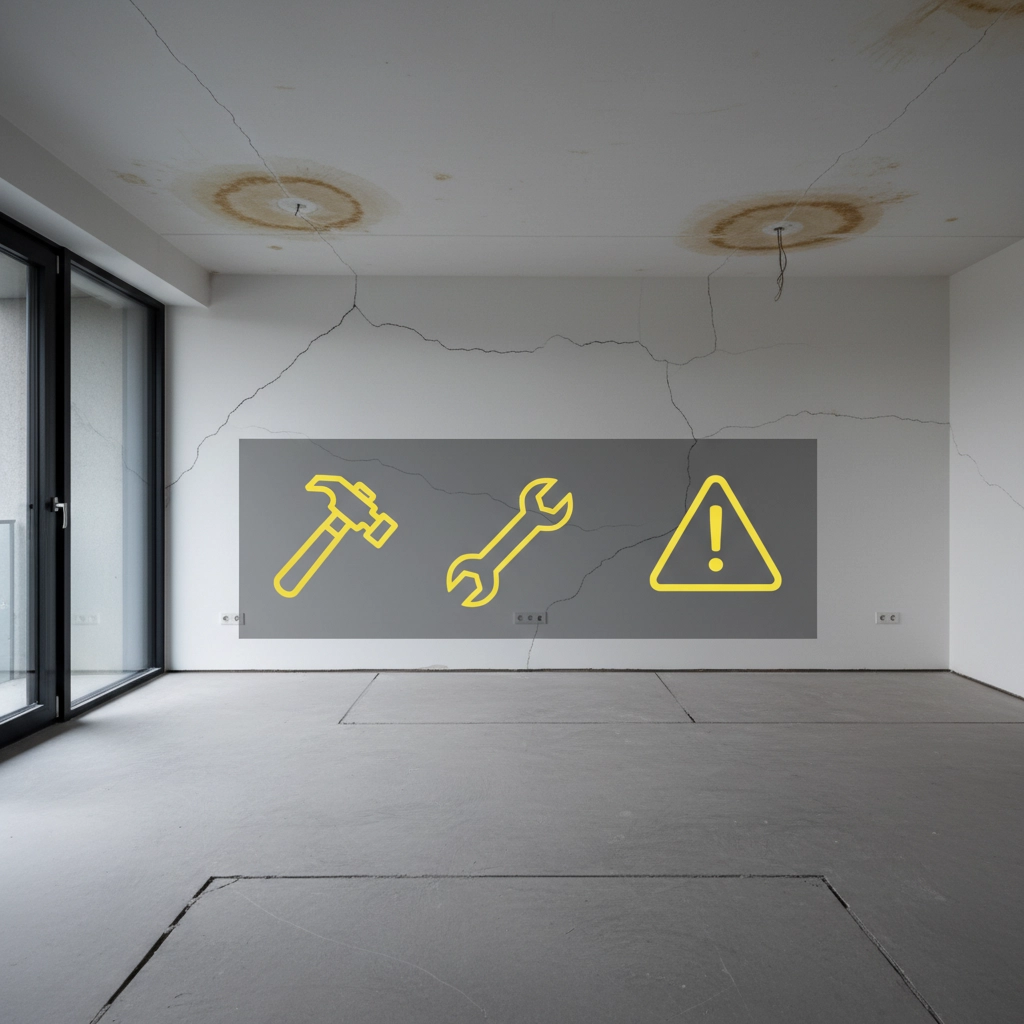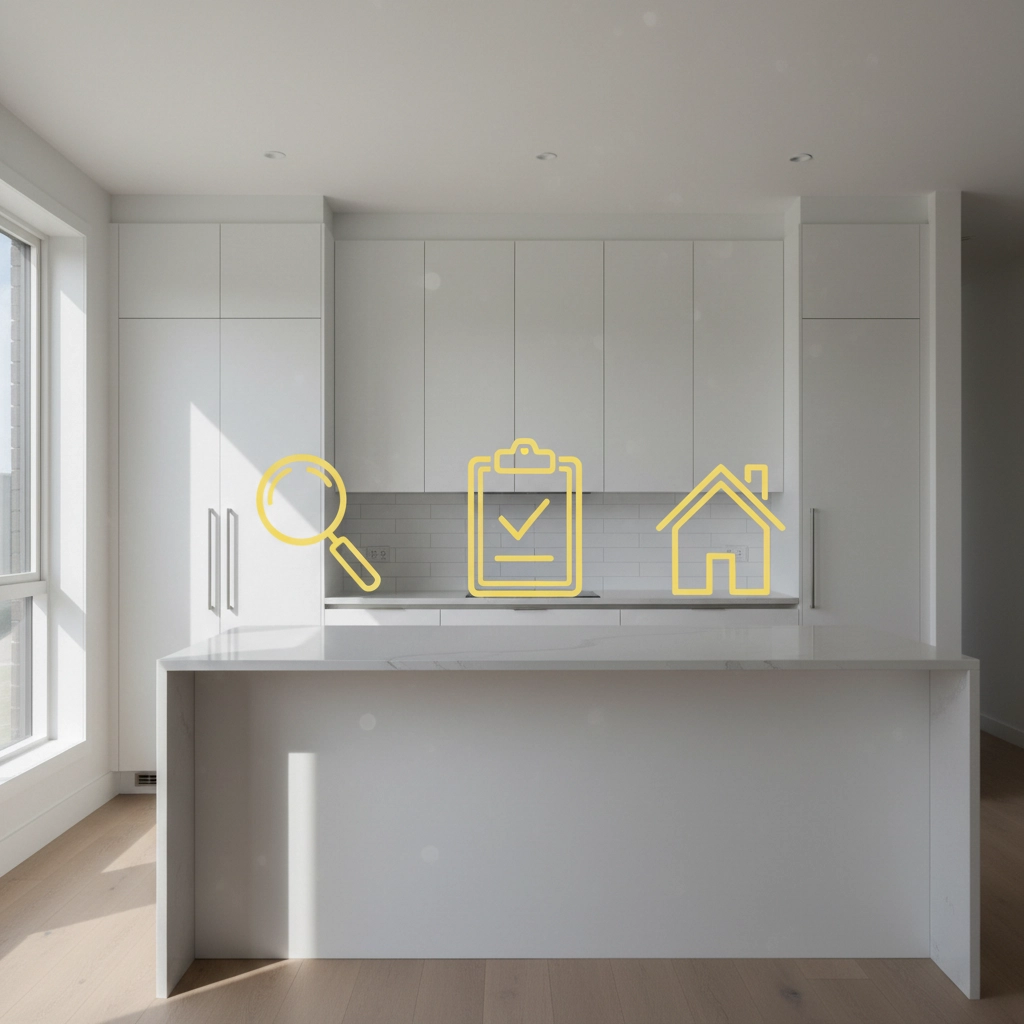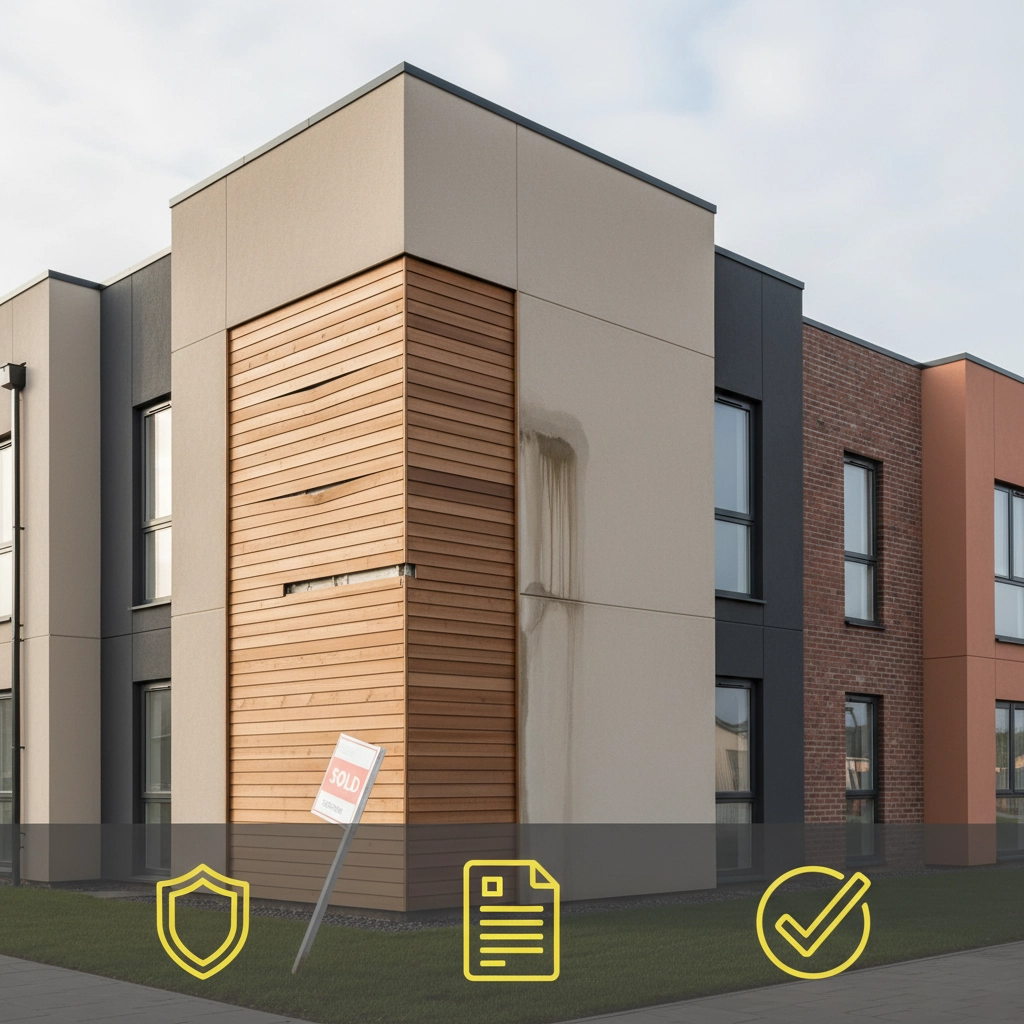Shared Ownership New Builds: 7 Hidden Risks Your Estate Agent Won’t Tell You About (And How to Protect Yourself)

Shared ownership schemes promise an affordable route onto the property ladder, especially with shiny new builds. Your estate agent will paint a rosy picture of lower deposits and manageable monthly payments. But here’s what they won’t tell you: shared ownership new builds come with unique risks that can turn your dream home into a financial nightmare.
After helping hundreds of buyers navigate new build purchases, I’ve seen too many shared ownership buyers get caught off guard by hidden pitfalls that estate agents conveniently forget to mention. Let’s expose these seven risks and, more importantly, show you exactly how to protect yourself.
Risk #1: You Pay 100% of Defect Repairs Despite Owning Just 25%
Here’s the shocker most buyers discover too late: even if you only own a 25% share, you’re responsible for 100% of all repair and maintenance costs. That leaking roof? Your bill. Faulty boiler? Your problem. Cracked walls from poor construction? All yours.
This hits particularly hard with new builds because developers often rush construction to meet deadlines, leading to defects that surface within the first few years. While some newer leases include a 10-year repair period where the housing association covers costs, this isn’t universal and only applies until you reach full ownership.
Protection Strategy: Before signing anything, get an independent snagging survey. A professional inspection costing around £300-500 can identify construction defects before you take ownership, giving you leverage to demand fixes from the developer rather than paying out of your own pocket later.

Risk #2: Hidden Construction Defects Become Your Liability Immediately
New builds aren’t immune to serious defects. Poor insulation, faulty plumbing, electrical issues, and structural problems are surprisingly common. But here’s the kicker with shared ownership: the moment you get your keys, these become your responsibility to fix, regardless of your ownership percentage.
Unlike private buyers who can pursue developers through NHBC warranties or legal action, shared ownership buyers often find themselves in limbo between the developer, housing association, and their own financial responsibilities.
Protection Strategy: Insist on a comprehensive snagging survey before completion. This isn’t just about cosmetic issues – a proper survey will identify serious defects that could cost thousands to repair. Document everything and don’t complete until major issues are resolved.
Risk #3: Housing Associations Won’t Chase Developers for Your Defects
Think the housing association will fight for you when construction defects appear? Think again. Most housing associations take a hands-off approach once you’ve completed, leaving you to deal directly with developers or contractors. They’ve already bought the properties in bulk and have their own relationships to protect.
This means you’re on your own when it comes to pursuing warranty claims, chasing developers for fixes, or dealing with ongoing construction issues. Without proper documentation of defects from day one, you’ll have virtually no leverage.
Protection Strategy: Create a detailed defects list through professional snagging before completion. This documentation becomes crucial evidence if you need to pursue the developer later. Companies like Snagit Ltd specialize in identifying these issues before they become your expensive problem.
Risk #4: Service Charges Can Skyrocket Without Your Control
Service charges apply to the full property value, not just your share. But here’s what estate agents don’t mention: these charges can increase dramatically, especially in new developments where initial estimates prove wildly inaccurate.
I’ve seen shared ownership buyers face service charge increases of 200-300% within five years of moving in. Major works, building insurance, and management fees can balloon, and you have limited say in the decisions despite being liable for the full costs.
Protection Strategy: Demand to see the housing association’s service charge projections for at least 10 years ahead. Ask specifically about planned major works, lift maintenance, exterior repairs, and building insurance. Factor these potential increases into your affordability calculations from day one.

Risk #5: Selling Restrictions Trap You with Defective Properties
When problems arise, you can’t just sell up and move on like a traditional homeowner. Housing associations typically have first refusal on sales, and they’re often reluctant to take back properties with ongoing defect issues. This can leave you trapped in a problematic property with no easy exit strategy.
The resale process can take 6-12 months even in good circumstances. If your property has unresolved defects or ongoing issues, finding a buyer becomes even more challenging.
Protection Strategy: Understand your lease’s resale provisions completely. More importantly, ensure any defects are properly documented and resolved before they become ongoing issues. A clean snagging report from the start gives you the best chance of a smooth sale later.
Risk #6: Insurance Nightmares with Shared Ownership Defects
Buildings insurance gets complicated with shared ownership. While the housing association typically arranges buildings insurance, you’re often responsible for the full premium despite partial ownership. But when defects cause damage, determining liability between construction defects and insurance claims creates a maze of finger-pointing.
Water damage from poor construction might not be covered if it’s deemed a building defect rather than an insured peril. Meanwhile, you’re paying for insurance that might not actually protect you from the most likely problems in a new build.
Protection Strategy: Review the buildings insurance policy in detail before completing. Understand what’s covered and what isn’t, particularly regarding construction defects. Ensure your contents insurance includes adequate protection for damage caused by building defects that might not be covered under the buildings policy.
Risk #7: Short Leases Compound Defect Problems
All shared ownership properties are leasehold, and defect issues become exponentially worse with shorter leases. If your lease has less than 80 years remaining (more common than you’d think), selling becomes difficult even without defect issues. Add ongoing construction problems, and you’re looking at a near-unsellable property.
Lease extensions become expensive, and having to pay for major defect repairs while simultaneously facing lease extension costs can be financially crippling.
Protection Strategy: Never buy shared ownership with less than 95 years on the lease. Factor in both potential defect costs and lease extension expenses when evaluating long-term affordability.

How Professional Snagging Protects Your Investment
The common thread through all these risks? They’re all preventable or manageable with proper defect identification before completion. This is where professional snagging becomes not just helpful, but essential for shared ownership buyers.
A comprehensive snagging survey serves as your insurance policy against these hidden risks. By identifying defects before completion, you maintain leverage to demand fixes from the developer rather than becoming liable for expensive repairs after moving in.
Professional snagging companies like Snagit Ltd understand the unique challenges shared ownership buyers face. They focus on identifying not just cosmetic issues, but the serious defects that could become major financial burdens down the line.
The Bottom Line: £300 Could Save You £30,000
Shared ownership can work, but only if you go in with your eyes wide open and proper protection in place. The £300-500 investment in professional snagging could easily save you tens of thousands in repair costs, service charge disputes, and selling complications later.
Don’t let estate agents rush you into completion without proper defect documentation. Your future financial security depends on getting this right from day one.
Ready to protect your shared ownership investment? Contact Snagit Ltd for a comprehensive pre-completion snagging survey. Our experienced surveyors know exactly what to look for in shared ownership new builds, giving you the leverage to demand fixes before problems become your expensive responsibility.
Remember: in shared ownership, you have all the liability but limited control. Make sure you’re protected from day one.
